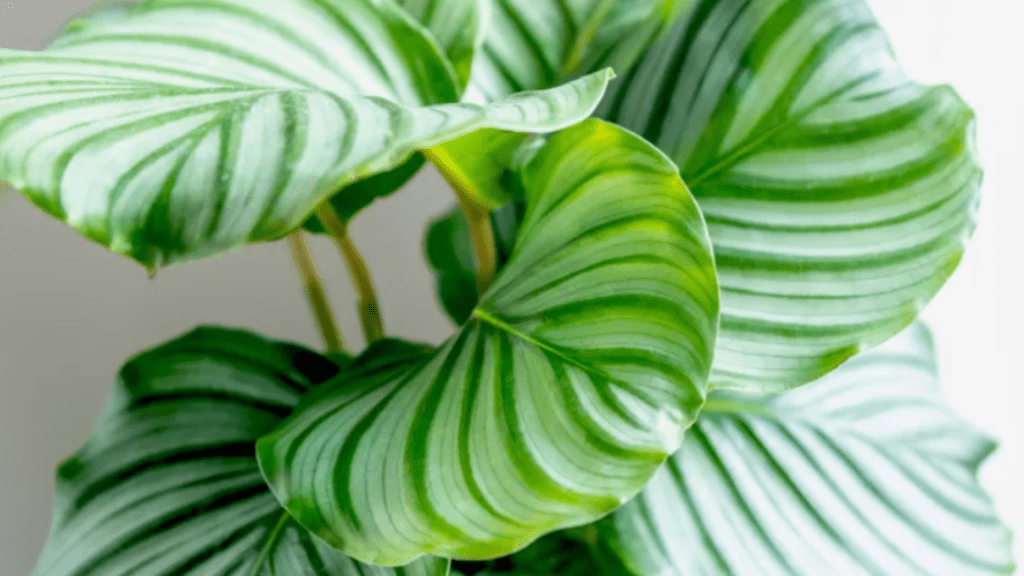
Ultimate Guide to Growing Healthy Calathea Orbifolia at Home
Calathea Orbifolia plants are known for their stunning foliage and unique patterns, making them a popular choice for indoor plant enthusiasts. However, caring for these plants can be a bit tricky, as they have specific needs when it comes to watering, lighting, and soil. In this ultimate guide, we will walk you through everything you need to know to ensure that your Calathea Orbifolia thrives and remains healthy in your home. Whether you are a beginner or an experienced plant parent, this guide will provide you with the knowledge and tips you need to keep your Calathea Orbifolia looking its best.
Table of Contents
ToggleWhat is Calathea Orbifolia?
Description of Calathea Orbifolia
Calathea Orbifolia is a stunning houseplant known for its large, round leaves with silver and green stripes. These tropical plants are native to the rainforests of Brazil and are prized for their unique foliage and striking appearance. The leaves of the Calathea Orbifolia are large and oval-shaped, making them a beautiful addition to any indoor space. With the right care, these plants can grow to be quite large and make a statement in any room. They are also known for their air-purifying properties, making them a healthy and beautiful addition to your home.
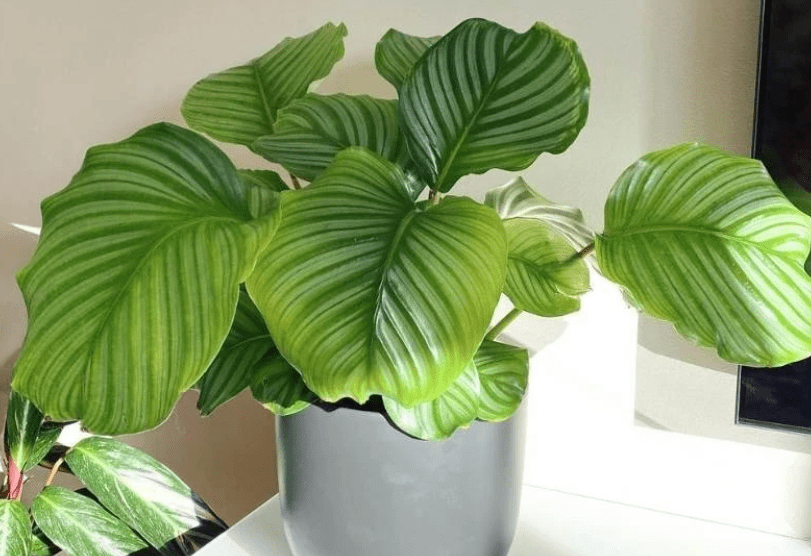
Origin and natural habitat
The Calathea Orbifolia is native to the rainforests of Brazil, where it thrives in the warm, humid climate. These plants are found on the forest floor, where they receive dappled sunlight and consistent moisture. In their natural habitat, they are surrounded by other tropical plants and have ample access to the humidity and nutrients they need to grow and thrive. It’s important to replicate these conditions as closely as possible when caring for a Calathea Orbifolia in a home environment. This means providing ample moisture, indirect sunlight, and a warm, humid atmosphere to ensure the plant’s health and vitality.
Importance as an indoor plant
The Calathea Orbifolia is an important indoor plant for several reasons. With the right care, these plants can grow to be quite large and make a statement in any room. They are also known for their air-purifying properties, making them a healthy and beautiful addition to your home. The Calathea Orbifolia is native to the rainforests of Brazil, where it thrives in the warm, humid climate. In their natural habitat, they are surrounded by other tropical plants and have ample access to the humidity and nutrients they need to grow and thrive. It’s important to replicate these conditions as closely as possible when caring for a Calathea Orbifolia in a home environment. This means providing ample moisture, indirect sunlight, and a warm, humid atmosphere to ensure the plant’s health and vitality. Overall, the Calathea Orbifolia is a beautiful and beneficial addition to any indoor space.
Benefits of Having a Calathea Orbifolia
Aesthetic appeal
The Calathea Orbifolia is a stunning plant that can add a touch of beauty to any room. Its large, lush leaves with their unique pattern and color make it a striking and eye-catching addition to any space. Whether placed in a living room, bedroom, or office, the Calathea Orbifolia is sure to enhance the aesthetic appeal of the room and bring a sense of natural beauty indoors. Its presence can help create a calming and relaxing atmosphere, making it a perfect choice for adding a touch of nature to your home decor. With its graceful and elegant appearance, the Calathea Orbifolia can be a focal point in any room and bring a sense of tranquility and serenity to the space. Overall, the aesthetic appeal of the Calathea Orbifolia makes it a wonderful choice for enhancing the visual appeal of any indoor environment.
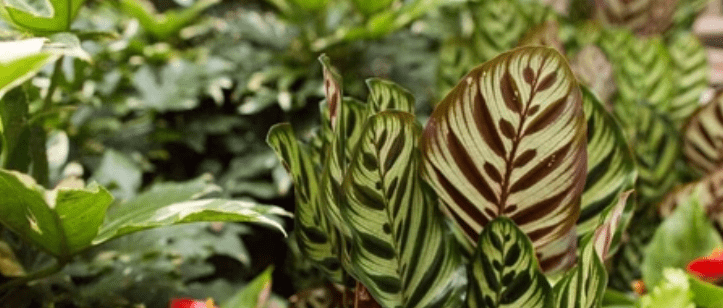
Air purifying qualities
The Calathea Orbifolia is known for its air-purifying qualities, making it a great addition to any indoor space. Its large leaves help to absorb toxins and purify the air, creating a healthier environment for you and your family. By adding a Calathea Orbifolia to your home, you can improve the air quality and create a more pleasant and healthy living space. This plant is an excellent choice for those looking to bring the benefits of nature indoors while also improving the overall air quality of their home. With its air-purifying qualities, the Calathea Orbifolia is a beneficial addition to any indoor environment.
Psychological benefits of indoor plants
Include reducing stress, increasing productivity, and improving overall mood. The presence of indoor plants, such as the Calathea Orbifolia, can create a calming and soothing environment, promoting relaxation and reducing anxiety. Studies have shown that being around plants can have a positive impact on mental well-being, helping to improve focus and concentration. Additionally, caring for indoor plants can provide a sense of purpose and fulfillment, boosting self-esteem and overall happiness. The Calathea Orbifolia, with its lush and vibrant foliage, can bring a sense of nature and tranquility into any indoor space, contributing to a positive and serene atmosphere. Overall, the psychological benefits of indoor plants make them a valuable addition to any home or office environment.
Choosing the Right Calathea Orbifolia
Selecting a healthy plant
Selecting a healthy plant is essential to ensure that it thrives in your indoor environment. When choosing a Calathea Orbifolia, look for one with vibrant, healthy foliage and no signs of discoloration or wilting. Check the soil to make sure it is moist but not waterlogged, as overwatering can lead to root rot. It’s also important to inspect the leaves for any pests or diseases. Choose a plant that is well-balanced and symmetrical, with no signs of damage or stress. By selecting a healthy Calathea Orbifolia, you can enjoy the many benefits of having a beautiful and thriving indoor plant in your home or office.
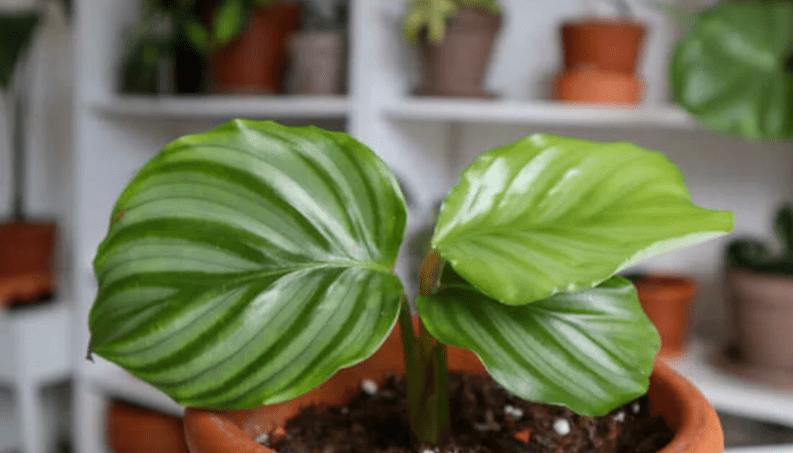
What to look for (leaf color, size, root health)
When choosing a Calathea Orbifolia, it’s important to look for certain characteristics to ensure that you are getting a healthy plant. First, check the leaf color – vibrant, healthy foliage without any discoloration or wilting is a good sign. The size of the plant also matters; look for a plant that is well-balanced and symmetrical, with no signs of damage or stress. Additionally, it’s essential to check the root health – the soil should be moist but not waterlogged, and there should be no signs of root rot. It’s also important to inspect the leaves for any pests or diseases. By selecting a healthy Calathea Orbifolia, you can enjoy the numerous benefits of having a beautiful and thriving indoor plant in your home or office.
Ideal Growing Conditions for Calathea Orbifolia
Light Requirements
Importance of indirect light
The Calathea Orbifolia thrives in indirect light, making it the perfect indoor plant for homes or offices with minimal natural light. Indirect light helps to prevent the leaves from burning or drying out, allowing the plant to maintain its vibrant and healthy appearance. It’s important to place the plant in a location where it can receive gentle, filtered light, such as near a north-facing window or in a room with sheer curtains. By providing the Calathea Orbifolia with the right amount of indirect light, you can ensure that it continues to grow and thrive in its indoor environment.
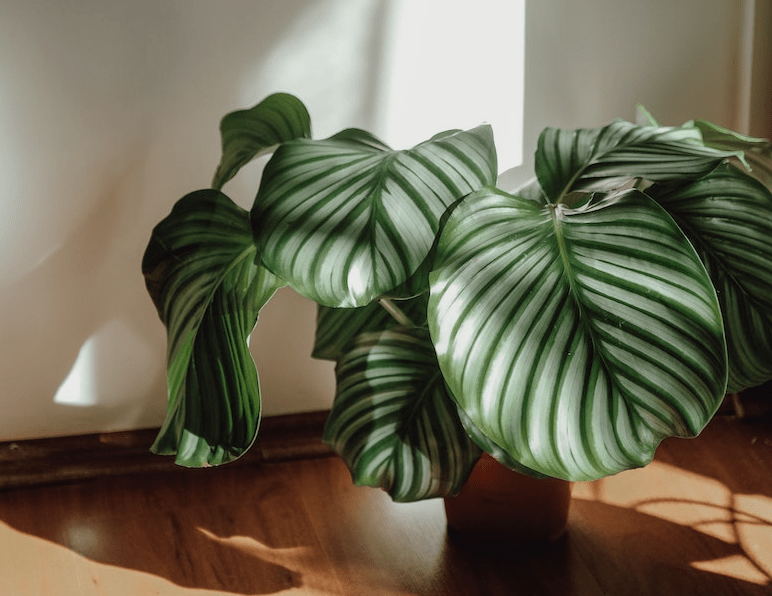
Avoiding direct sunlight
Avoiding direct sunlight is crucial for the health and well-being of the Calathea Orbifolia plant. Direct sunlight can cause the leaves to burn and become damaged, leading to a decline in the plant’s overall health. It’s important to place the plant in a location where it can receive gentle, filtered light, such as near a north-facing window or in a room with sheer curtains. By providing the Calathea Orbifolia with the right amount of indirect light, you can ensure that it continues to grow and thrive in its indoor environment. Additionally, it’s essential to check the root health – the soil should be moist but not waterlogged, and there should be no signs of root rot. It’s also important to inspect the leaves for any pests or diseases. By selecting a healthy Calathea Orbifolia, you can enjoy the numerous benefits of having a beautiful and thriving indoor plant in your home or office.
Temperature and Humidity
Are important factors to consider when caring for the Calathea Orbifolia plant. It thrives in temperatures between 65-85°F and prefers higher levels of humidity. It’s best to keep the plant in a room with a humidifier or place a tray of water near the plant to help maintain the ideal humidity levels. Additionally, avoid placing the plant in areas with drafts or extreme temperature fluctuations, as this can cause stress to the plant. By providing the appropriate temperature and humidity levels, you can ensure that the Calathea Orbifolia remains healthy and vibrant in your indoor space.
Planting and Potting Calathea Orbifolia
Choosing the right pot
Is crucial for the health and growth of your Calathea Orbifolia plant. When selecting a pot, it’s important to consider the size and drainage capabilities. The pot should be slightly larger than the root ball of the plant to allow for adequate room for growth. It’s also essential that the pot has drainage holes to prevent overwatering and waterlogged soil, which can lead to root rot. Additionally, using a pot with a saucer or tray underneath can help catch excess water and prevent it from leaking onto surfaces. Choose a pot that is made of a breathable material, such as terracotta, to allow for proper air circulation around the roots. This will help prevent the soil from becoming compacted and promote healthy root development. By choosing the right pot for your Calathea Orbifolia, you can ensure that the plant has the proper environment to thrive and flourish.
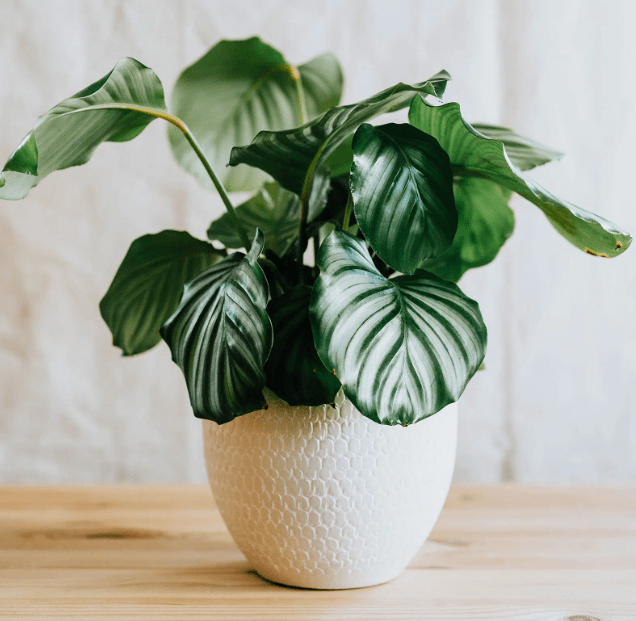
Best soil types and potting mixes
When it comes to the best soil types and potting mixes for your plants, it’s important to consider a few key factors. First, you’ll want to choose a well-draining soil that allows for proper aeration and prevents waterlogging. This can be achieved by using a mix that includes components such as perlite, pumice, or coarse sand. These materials help to create air pockets in the soil, which is essential for healthy root growth.
In addition to good drainage, you’ll also want to consider the nutrient content of the soil. Look for a potting mix that includes organic matter, such as compost or peat moss, to provide essential nutrients to your plants. It’s also a good idea to supplement with a slow-release fertilizer to ensure that your plants have access to the nutrients they need for optimal growth.
When it comes to the type of potting mix to use, it’s important to consider the specific needs of your plants. For example, succulents and cacti require a well-draining mix to prevent root rot, while tropical plants may benefit from a mix that retains more moisture. Be sure to research the specific requirements of your plants to determine the best potting mix for them.
Overall, choosing the right soil type and potting mix is essential for the health and growth of your plants. By providing a balanced mix of nutrients, good drainage, and proper aeration, you can create an ideal environment for your plants to thrive.
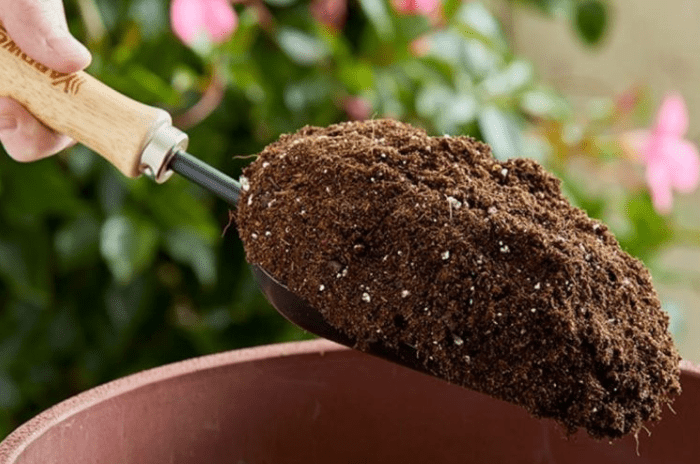
Watering Calathea Orbifolia
How often to water
The frequency of watering your Calathea Orbifolia plant will depend on several factors, such as the temperature, humidity, and sunlight in your home. Generally, it is best to water your plant about once a week, allowing the soil to partially dry out between waterings. It’s important to check the moisture level of the soil before watering to prevent overwatering, which can lead to root rot. Additionally, using a well-draining potting mix and a pot with drainage holes can help maintain the right balance of moisture for your plant. Pay attention to the specific needs of your Calathea Orbifolia and adjust your watering schedule as necessary to keep it healthy and thriving.
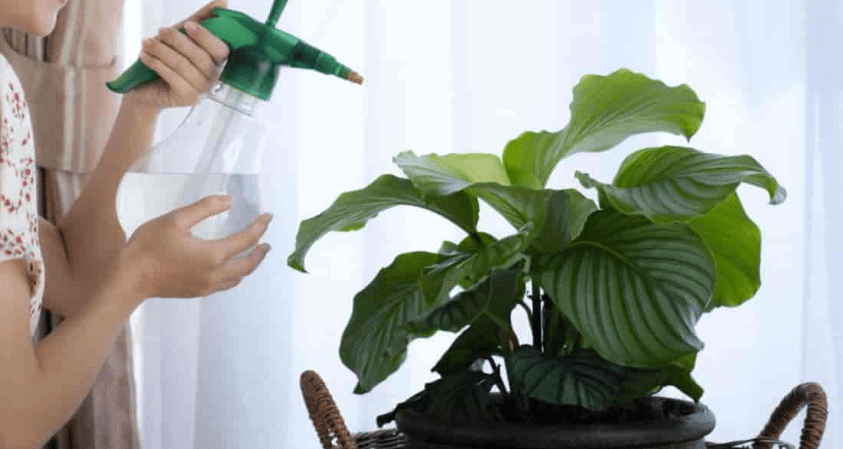
Signs of overwatering and underwatering
Can be easily identified if you observe your plants closely. Overwatering can lead to wilting, yellowing, and mushy or rotting roots. On the other hand, underwatering can cause the leaves to become dry, crispy, and curled at the edges. It’s important to pay attention to these signs and adjust your watering habits accordingly. Additionally, using a moisture meter can be helpful in determining the moisture level of the soil and ensuring that you are providing the right amount of water for your plants. By being mindful of the signs of overwatering and underwatering, you can help your plants thrive and maintain their overall health and beauty.
Best practices for watering
Include paying attention to the specific needs of your plants, such as the Calathea Orbifolia, and adjusting your watering schedule as necessary to keep them healthy and thriving. It’s important to water your plants when the top inch of the soil feels dry to the touch. You should also make sure that your pots have drainage holes to allow excess water to escape. Overwatering can lead to wilting, yellowing, and mushy or rotting roots, while underwatering can cause the leaves to become dry, crispy, and curled at the edges. By observing these signs, you can adjust your watering habits accordingly. Using a moisture meter can also be helpful in determining the moisture level of the soil and ensuring that you are providing the right amount of water for your plants. By following these best practices for watering, you can help your plants thrive and maintain their overall health and beauty.
Feeding and Fertilizing Calathea Orbifolia
Types of fertilizers to use
When it comes to fertilizing your Calathea Orbifolia, it’s important to use a balanced, water-soluble fertilizer. You can use a general-purpose fertilizer diluted to half the recommended strength. Fertilize your plant every 2-4 weeks during the growing season, which is typically from spring to fall. During the winter months, you can reduce the frequency of fertilizing to once every 6-8 weeks. Make sure to water your plant before and after fertilizing to prevent root burn. It’s also important to avoid over-fertilizing, as this can lead to a buildup of salts in the soil, which can harm the plant. By using the right type of fertilizer and following a proper feeding schedule, you can ensure that your Calathea Orbifolia gets the nutrients it needs to thrive.
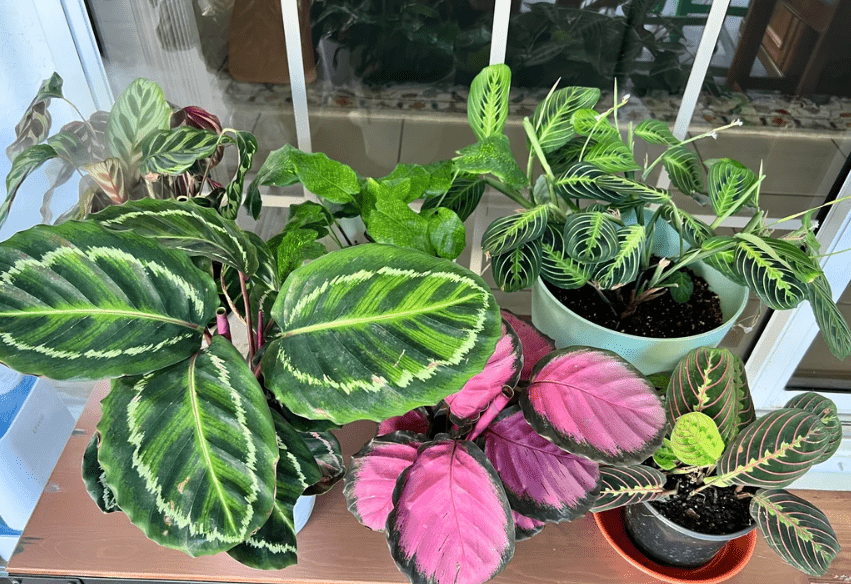
Feeding schedule
Is crucial for the proper care and maintenance of your Calathea Orbifolia. When it comes to fertilizing your plant, it’s important to use a balanced, water-soluble fertilizer. You can use a general-purpose fertilizer diluted to half the recommended strength. It’s best to fertilize your plant every 2-4 weeks during the growing season, which is typically from spring to fall. During the winter months, you can reduce the frequency of fertilizing to once every 6-8 weeks as the plant’s growth slows down. It’s important to water your plant before and after fertilizing to prevent root burn and ensure that the fertilizer is properly absorbed. Additionally, it’s crucial to avoid over-fertilizing, as this can lead to a buildup of salts in the soil, which can harm the plant. By following a proper feeding schedule and using the right type of fertilizer, you can provide your Calathea Orbifolia with the nutrients it needs to thrive and maintain its health and vibrancy.
Pruning and Maintenance
How to prune correctly
When it comes to pruning your plants, it’s important to use the right tools and techniques to ensure the health and growth of your plants. Make sure to use sharp, clean pruning shears to make clean cuts and prevent damage to the plants. When pruning, always start by removing dead or diseased branches and leaves to promote new growth and prevent the spread of disease. Additionally, you can prune to shape the plant and remove any overgrown or crowded areas. It’s important to prune at the right time, typically during the growing season, to avoid interfering with the plant’s natural growth cycle. Regular maintenance and pruning can help your plants thrive and maintain a healthy appearance. Remember to always research the specific pruning needs of your plants to ensure you are pruning correctly for their individual needs.
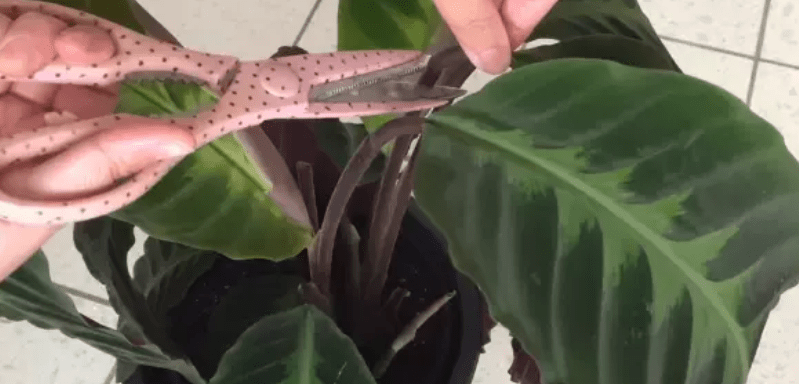
Removing dead or damaged leaves
Is an important part of plant maintenance. When leaves are dead or damaged, they can take away valuable nutrients and energy that the plant needs to thrive. By removing these leaves, you can promote healthy growth and prevent the spread of disease. It’s important to use the right tools, such as sharp, clean pruning shears, to make clean cuts and avoid further damage to the plant. When removing dead or damaged leaves, be sure to cut at an angle and close to the main stem to promote new growth. Additionally, regularly inspecting your plants for dead or damaged leaves can help you stay ahead of any potential issues and keep your plants looking their best. Overall, taking the time to remove dead or damaged leaves can contribute to the overall health and appearance of your plants.
Common Problems and Solutions
Pests (spider mites, aphids, etc.)
Pests such as spider mites and aphids can be a common issue for many gardeners. These pests can wreak havoc on your plants by sucking the sap from the leaves and causing damage. To control these pests, you can use natural remedies such as insecticidal soap or neem oil to help keep them at bay. It’s also important to regularly inspect your plants for signs of pest infestations so that you can address the issue early on. Additionally, promoting a healthy environment for your plants by providing proper sunlight, water, and nutrients can help to strengthen the plants and make them more resistant to pests. If you do notice pest problems, be sure to remove any heavily infested leaves and use targeted treatments to protect your plants. By staying vigilant and proactive, you can help protect your plants from pesky pests and keep them thriving.
Diseases (root rot, leaf spot, etc.)
It’s important for gardeners to be aware of common plant diseases such as root rot and leaf spot. Root rot occurs when the roots of a plant are exposed to too much water, leading to decay and potential death of the plant. To prevent root rot, it’s crucial to ensure proper drainage in your soil and avoid overwatering your plants. Leaf spot, on the other hand, presents as dark, often circular spots on the leaves of the plant and can be caused by fungi, bacteria, or environmental stress. To control leaf spot, it’s important to remove and destroy any infected leaves and provide good air circulation around the plant. Applying fungicides and properly watering your plants can also help prevent the spread of leaf spot. It’s important to monitor your plants regularly for any signs of disease and take appropriate action to prevent further spread. By taking a proactive approach and providing a healthy environment for your plants, you can help protect them from common diseases and keep them thriving.
Yellowing or browning leaves: Causes and remedies
Yellowing or browning leaves on your plants can be a sign of various issues. One common cause is root rot, which occurs when the roots are exposed to too much water, leading to decay and potential death of the plant. To prevent root rot, it’s crucial to ensure proper drainage in your soil and avoid overwatering your plants. Another common issue is leaf spot, which presents as dark, often circular spots on the leaves and can be caused by fungi, bacteria, or environmental stress. To control leaf spot, it’s important to remove and destroy any infected leaves and provide good air circulation around the plant. Applying fungicides and properly watering your plants can also help prevent the spread of leaf spot. It’s important to monitor your plants regularly for any signs of disease and take appropriate action to prevent further spread. By taking a proactive approach and providing a healthy environment for your plants, you can help protect them from common diseases and keep them thriving.
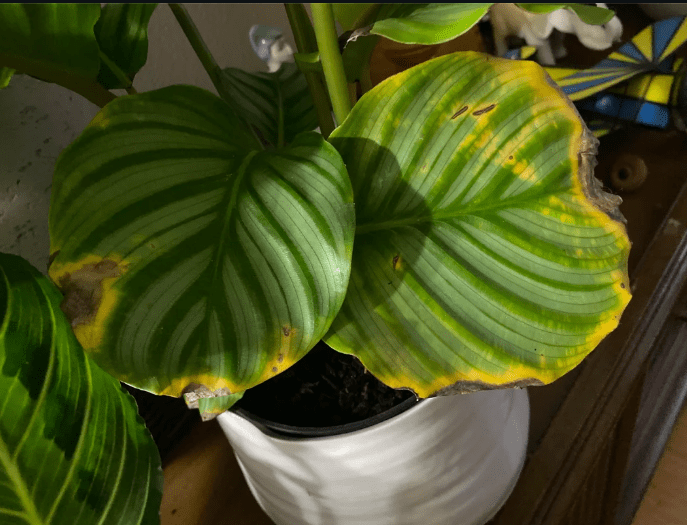
Propagation of Calathea Orbifolia
Can be done through division or by rooting stem cuttings. When dividing the plant, carefully remove it from its pot and gently separate the roots into smaller sections, making sure each section has enough roots and leaves to survive on its own. Plant these sections in new pots with well-draining soil and keep them in a warm, humid environment to encourage new growth. For stem cuttings, take a healthy, non-flowering stem with at least a few leaves and place it in water or soil to encourage root growth. Keep the cutting in a warm, humid environment and wait for roots to develop before transplanting it into its own pot. Propagating Calathea Orbifolia can be a rewarding experience and is a great way to expand your plant collection or share with fellow plant enthusiasts. Remember to provide the right care and environment for the new plants to ensure their successful growth.
Decorating with Calathea Orbifolia
Placement ideas within your home
Calathea Orbifolia is a beautiful and unique plant that can add a touch of tropical elegance to your home. When it comes to placement, this plant thrives in bright, indirect light, so it is best to place it near a window where it can receive plenty of natural light without being directly exposed to the sun. It is important to keep the plant away from drafts and cold temperatures, so consider placing it in a well-insulated area of your home. Additionally, Calathea Orbifolia prefers high humidity, so you may want to consider placing a humidifier nearby or misting the plant regularly to create the ideal environment for its growth. This plant also thrives in warmer temperatures, so be mindful of where you place it within your home. With the right care and placement, Calathea Orbifolia can make a stunning addition to any room in your home.
Complementary plants and decor tips
When it comes to adding plants to your home decor, it’s important to consider the overall aesthetic and environment you want to create. Consider adding complementary plants to create a cohesive and visually appealing display. For example, pairing Calathea Orbifolia with other tropical plants such as peace lilies or snake plants can create a lush and vibrant atmosphere. You can also consider adding decorative planters and stands to elevate the look of your plants and tie them in with the rest of your decor. Additionally, consider incorporating natural elements such as wood and woven materials to enhance the overall tropical and natural feel of your space. By carefully selecting and arranging complementary plants and decor, you can create a harmonious and inviting atmosphere in your home.
In conclusion, growing healthy Calathea Orbifolia plants at home requires attention to detail and proper care. From the right amount of sunlight to the correct watering schedule, it’s important to provide the right conditions for these beautiful plants to thrive. By following the tips and advice in this guide, you can ensure that your Calathea Orbifolia plants will be healthy and vibrant, adding beauty to your home. Remember, the key to successful plant care is consistency and attentiveness.
Frequently asked questions And Answer
Calathea Orbifolia prefers bright, indirect light. Direct sunlight can cause the leaves to fade or burn.
Water your Calathea Orbifolia when the top inch of soil is dry, usually about once a week. It’s important to keep the soil consistently moist but not waterlogged.
Calathea Orbifolia thrives in temperatures between 65-75°F (18-24°C) and prefers high humidity levels.
You can increase humidity by misting the leaves regularly, placing a humidifier near the plant, or placing a tray of water and pebbles near the plant to create a humid environment.
Fertilize your Calathea Orbifolia once a month during the growing season (spring and summer) with a balanced, water-soluble fertilizer diluted to half strength.
Brown tips on the leaves can be caused by underwatering, low humidity, or fluoride in the water. Make sure to water your plant consistently, increase humidity, and use distilled or filtered water to prevent fluoride buildup.
Yes, Calathea Orbifolia can be propagated through division. Simply divide the plant at the root and replant each section in its own pot with fresh soil.
Spider mites, aphids, and mealybugs can infest Calathea Orbifolia. To prevent these pests, regularly inspect your plant and keep it in a clean environment. Overwatering can also lead to root rot, so it’s important to maintain proper watering habits.
